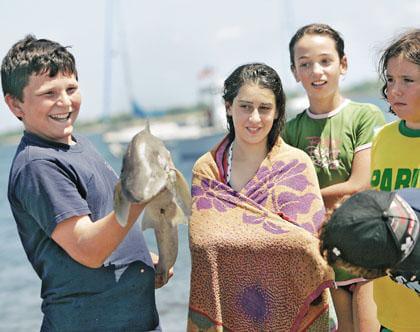By Nathan Duke
A national study of the nation’s beaches found that two Queens beaches — Douglas Manor and Rockaway’s Breezy Point — were among the city’s three most-polluted swimming sites.
The National Resources Defense Council released its annual study July 29 that reviews bacteria counts at beaches across the nation resulting from a variety of factors, including sewage spills and pollution washed into waterways by rainfall. The study also rates beaches based on water quality and how often they were closed down.
This year’s study found that Douglas Manor Beach was the city’s most polluted beach, exceeding acceptable bacteria count levels by 13 percent, while Breezy Point exceeded acceptable levels by 11 percent, tying for second place with Brooklyn’s Gerritsen/Kiddie Beach as the city’s second most-polluted beach.
Last week, the city Health Department said Douglas Manor Beach had either been closed or given advisories against swimming during a total of 46 days since the beginning of the summer.
From May 24 to June 23, the beach was closed, and from June 24 to July 8, swimmers were advised not to get in the water. The beach had also been given four wet water advisory notices, which are posted after bacteria has risen above safe levels in city waterways, since July 8.
The NRDC’s study took 72 samples at Douglas Manor Beach and 19 samples at Breezy Point. The nine other Rockaway beaches were all found to have acceptable bacteria levels, according to the study.
The council listed a variety of reasons for the Douglaston swimming site to be closed down, including storm water and overflow from septic tanks and sewers. Breezy Point was closed for high bacteria counts, but no source for the pollution was listed.
Marianne Cooney, dock manager at Douglas Manor Beach, said swimmers had been going for a dip less this year due to heavy rainfall.
The Council’s 2008 study also found that the Douglaston beach had been shut down more than any other city beach, with a 20 percent rate of exceeding safe levels of bacteria. Gerritsen/Kiddie Beach had the second-worst rate, with 14 percent, while Breezy Point came in third with 8 percent in last year’s study.
An NRDC spokeswoman said swimming at a beach with high bacteria counts could lead to skin rashes, pink eye, respiratory ailments, an irritated throat or gastroenteritis.
Reach reporter Nathan Duke by e-mail at nduke@cnglocal.com or by phone at 718-229-0300, Ext. 156.


































